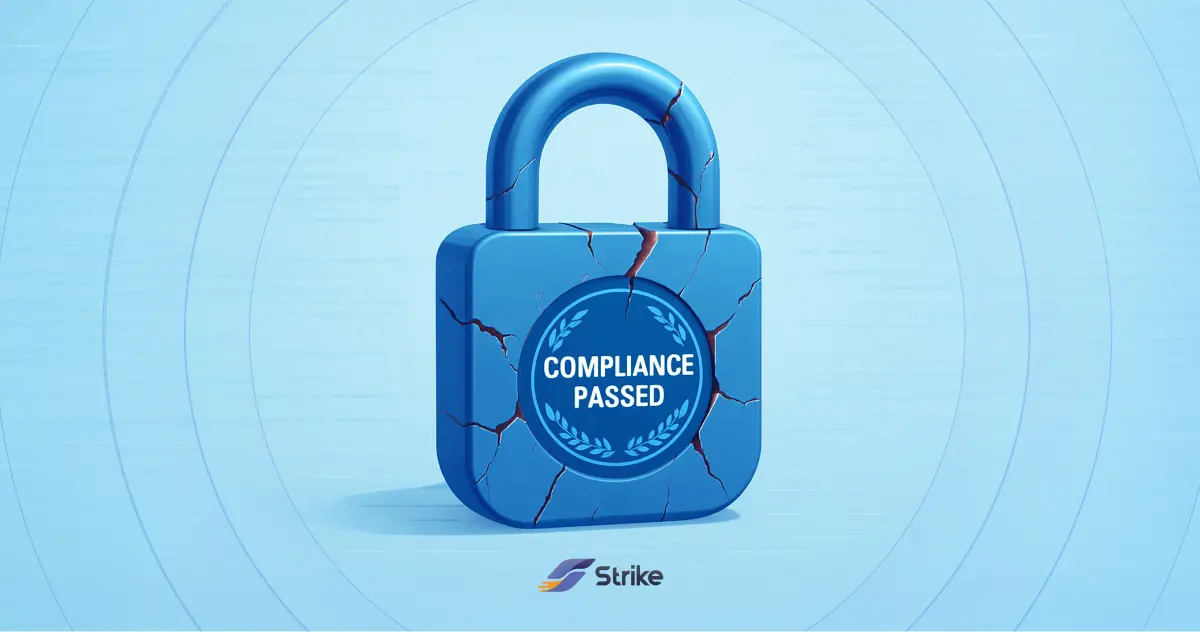
Compliance frameworks like ISO 27001, SOC 2, and PCI-DSS are designed to keep organizations accountable for safeguarding sensitive information. Yet, many companies still approach compliance as a box-ticking exercise: policies are written, controls are documented, and audits are passed. The problem? Attackers don’t follow checklists. Real-world breaches show that having certificates on paper doesn’t prevent systems from being exploited. Without testing, compliance can create a false sense of security. Keep reading to understand why real testing, especially pentesting, is the missing piece in effective compliance strategies.
Why checklists and audits fall short
Compliance audits are important, but they are limited in scope. Auditors review documentation and confirm whether a control exists, not whether it truly resists an attack. This leaves significant blind spots:
- Static validation: Audits often rely on evidence captured at a single point in time, missing how security degrades as systems evolve.
- Assumption of effectiveness: Having a firewall rule or MFA policy in place doesn’t mean it’s configured properly or used consistently.
- No attacker mindset: Auditors don’t simulate how a malicious actor would bypass or abuse controls to reach sensitive data.
For example, PCI-DSS requires organizations handling credit card data to restrict network access. An audit might confirm that firewall rules are present. But only a penetration test can prove whether those rules actually stop lateral movement or data exfiltration.
How pentesting supports compliance frameworks
Penetration testing is not just about finding vulnerabilities, it’s about validating whether compliance controls hold up against real-world attacks. Here’s how it supports key frameworks:
- ISO 27001: Requires organizations to identify risks and apply controls. Pentesting provides evidence of whether controls mitigate actual threats, strengthening the risk treatment plan.
- SOC 2: Auditors assess security, availability, and confidentiality controls. Pentesting demonstrates operational effectiveness, helping organizations show that controls do more than exist—they work.
- PCI-DSS: Specifically mandates regular penetration tests to assess the resilience of cardholder data environments. This ensures compliance isn’t limited to paperwork but includes active defense validation.
Pentesting closes the gap between theoretical compliance and practical resilience.
The role of continuous testing in staying compliant
Point-in-time pentests help meet compliance requirements, but threats don’t wait for annual audits. A vulnerability that appears the week after certification can put compliance status at risk until it’s identified and fixed. That’s why continuous pentesting and automated retesting are becoming essential for compliance-driven organizations.
With solutions like Strike’s Compliance Suite, companies can:
- Map vulnerabilities directly to compliance requirements (ISO 27001, SOC 2, PCI-DSS).
- Continuously validate whether implemented controls remain effective.
- Save time by automating evidence collection for audits.
- Prove with real data that they are not only compliant but resilient.
This integrated approach transforms compliance from a bureaucratic exercise into a living security practice.
Moving beyond “compliance on paper”
Organizations that treat compliance as an annual hurdle risk both security failures and regulatory penalties. Real attackers won’t care about your last audit certificate. They’ll exploit any misconfiguration or overlooked vulnerability.
By embedding pentesting into compliance strategies, companies achieve two goals at once: they stay aligned with frameworks like ISO 27001, SOC 2, and PCI-DSS, and they gain confidence that those controls withstand real-world threats.
Compliance is valuable, but it’s not enough. Checklists and audits prove alignment with standards, but they don’t test resilience. Real testing, through pentesting and continuous validation, is what ensures compliance translates into actual security.
At Strike, we help organizations integrate pentesting directly into their compliance strategy with our Compliance Suite. Don’t settle for compliance on paper, make sure your defenses work when it matters.









